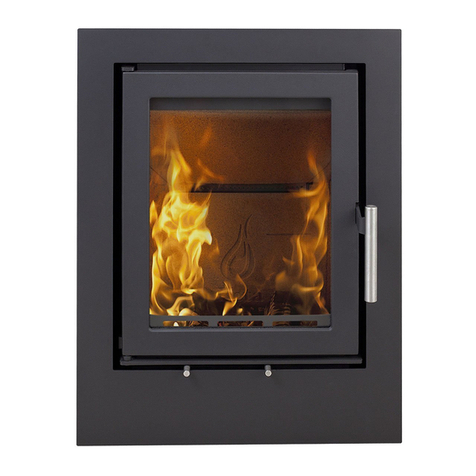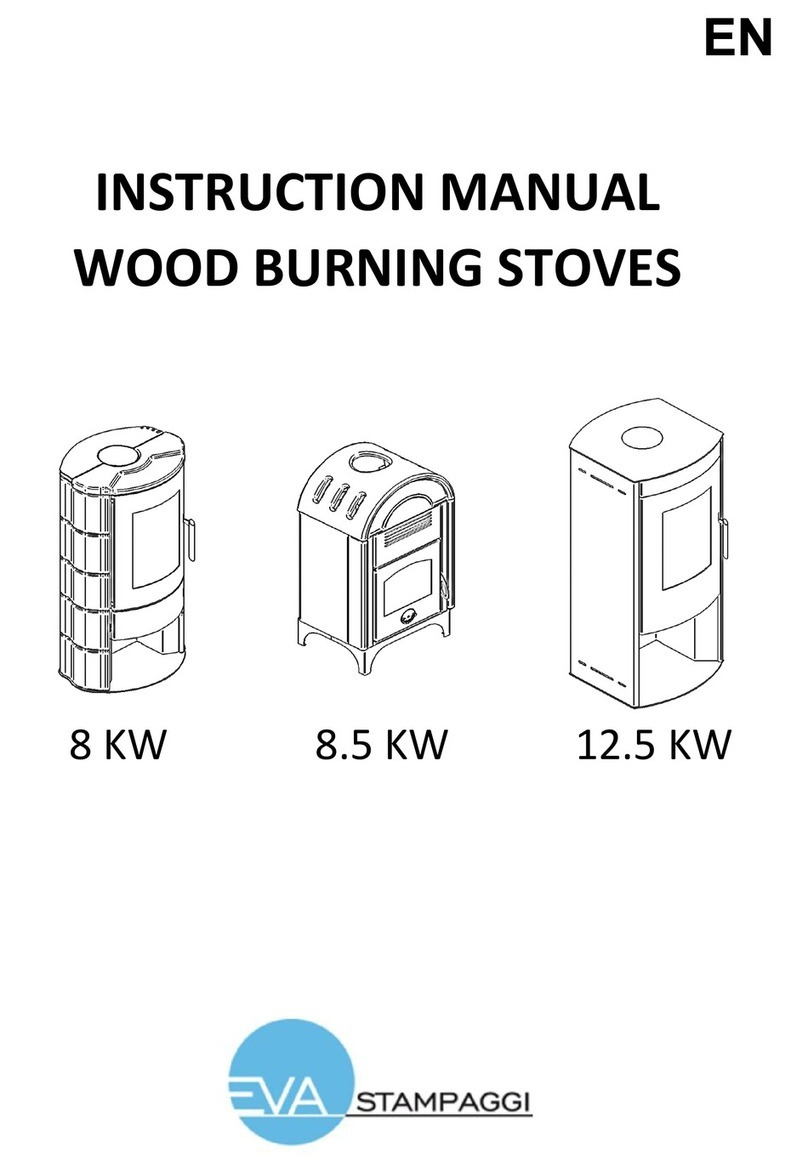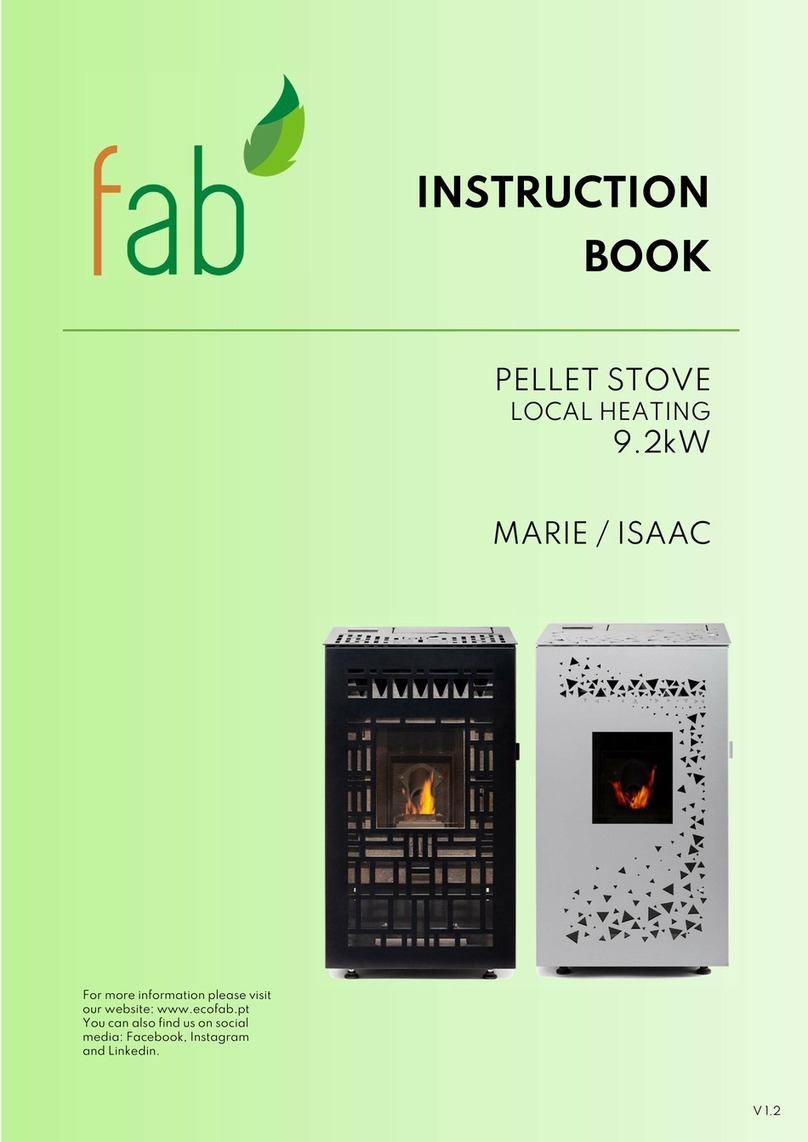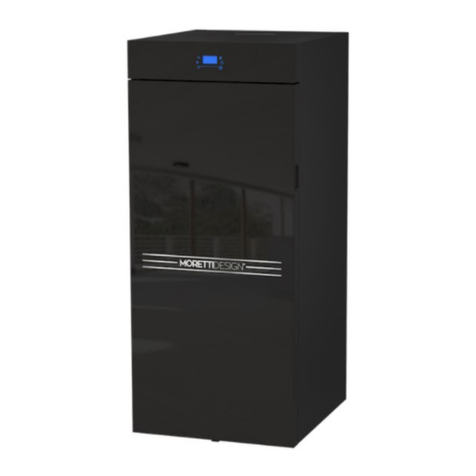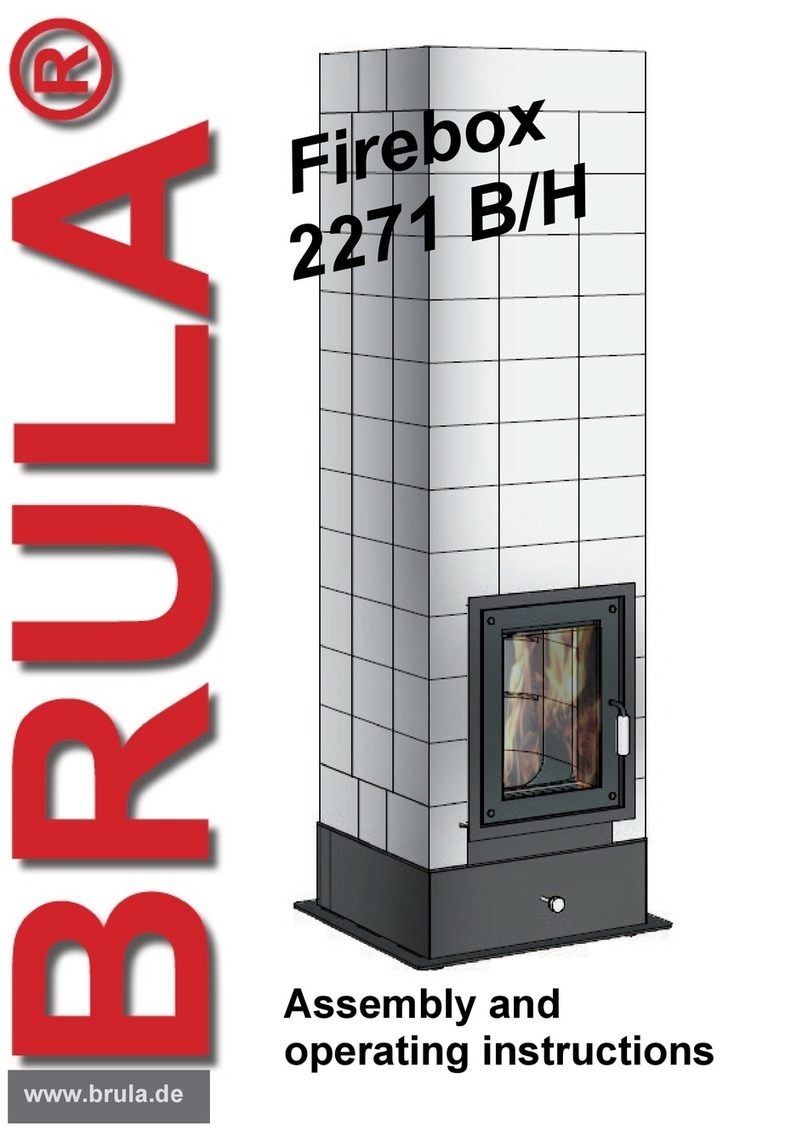
10
water inside the wood thus creating very poor
conditions for combustion.
The main cause of burning problems with
wood stoves is due to excessively damp wood.
Wood can appear perfectly dry on the outside
but still contain 40-50% water on the inside. A
moisture meter can be purchased from stove and
equipment suppliers if you wish to check your
wood source is correct. Split a log and check the
inside as well as the outside.
Refuelling on to a low fire bed if there is
insufficient burning material in the fire bed to
light a new fuel charge, excessive smoke emission
can occur. Refuelling must be carried out onto a
sufficient quantity of glowing embers and ash so
that the new fuel charge will ignite in a reasonable
period. If there are too few embers in the fire bed,
add suitable kindling to prevent excessive smoke.
Fuel overloading the maximum amount of fuel
specified in this manual should not be exceeded,
overloading can cause excess smoke.
Operation with door left open Operation with the
door open can cause excess smoke and spillage
into the room. The appliance ‘Must Not’ be
operated with the appliance door left open.
Dampers Left Open: Operation with the air
controls or appliance dampers open can cause
excess smoke. The appliance must not be
operated with air control, appliance dampers
or door left open except as directed in the
instructions.
3.7 LIGHTING A FIRE USING SMOKELESS
FUEL
■ Open the primary and secondary air fully by
pulling out the primary and secondary air
sliders.
■ Lay firelighters on the grate and add a small
amount of kindling wood to the top.
■ Place a small quantity of smokeless fuel on top.
■ Light firelighters safely using matches leave
the door slightly open.
■ When the fire is fully established after a couple
of minutes add more smokeless fuel and close
the door.
■ When the fire has become established, reduce
the amount of secondary by pushing in the
secondary air slider, do not fully close as this will
help to keep the glass clean.
■ The output and flame effect can be altered by
opening and closing the primary air slider.
Care should be taken to ensure that the firebox is
not overfilled with smokeless fuel – it should be
no higher than the log guard.
3.8 IMPORTANT INFORMATION FOR
BURNING SMOKELESS FUEL
When re-fuelling the stove always refuel onto
a bed of hot embers, fully open the secondary
and primary air controls until the new fuel is well
alight, before adjusting the air controls for the
desired setting. If there is insufficient burning
material in the fire-bed to light a new fuel charge,
excessive smoke emission can occur.
Re-fueling must be carried out onto a sufficient
quantity of glowing embers and ash that the
new fuel charge will ignite in a reasonable period.
If there are too few embers in the fire bed, add
suitable kindling to prevent excessive smoke.
Fuel overloading, never overload the stove. The
amount of fuel specified in this manual should
not be exceeded, overloading can cause excess
smoke.
Operation with door left open can cause excess
smoke. The appliance must not be operated with
the appliance door left open except as directed in
the instructions.
Dampers left open, Operation with the air controls
or appliance dampers open fully can cause excess
smoke. The appliance must not be operated with
air controls appliance dampers or door left open
except as directed in the instructions.
Never leave the stove unattended until the new
fuel is well alight. Persistent fume emission is
dangerous and must be investigated. If fume
emission persists, open doors and windows to
ventilate the room and let the fire dies out. Have
the chimney inspected for blockages and clean
if required. Do not relight the fire until the cause
has been found. We recommend that you seek
professional advice.
This appliance has been designed to be burned
with the door closed at all times other than when
re-fuelling. It should not be operated as an open
fire. Typical re-fuelling for smokeless fuel is 2
hours.
Daily Maintenance The ashpan should be
checked and emptied regularly. You should never
allow the ashes in the pan to build up to the level
of the grate. If they are allowed to build up, the
grate will become sandwiched between the ash
below it and above it. This will overheat the grate
and cause distortion and premature wear.
























